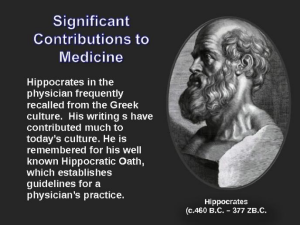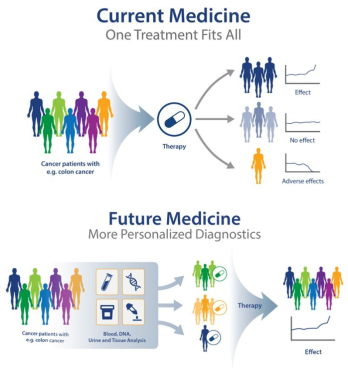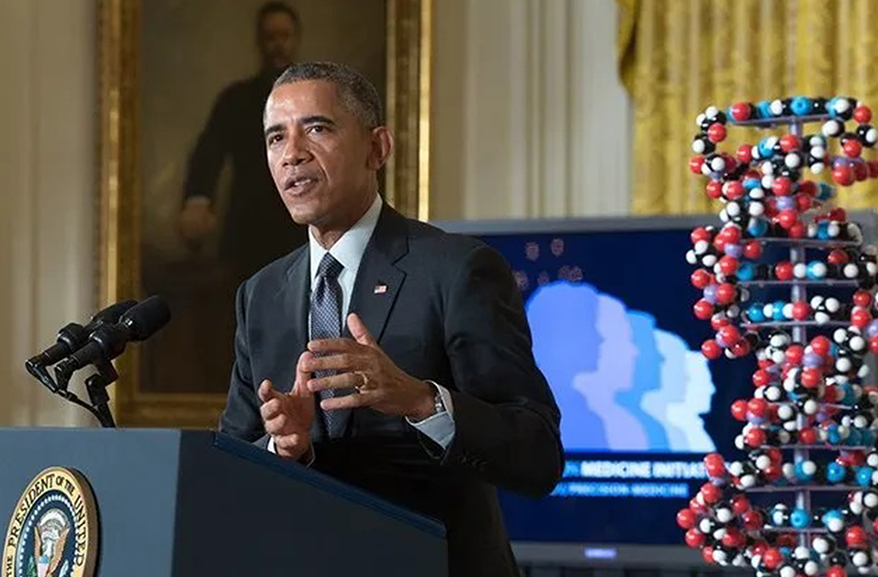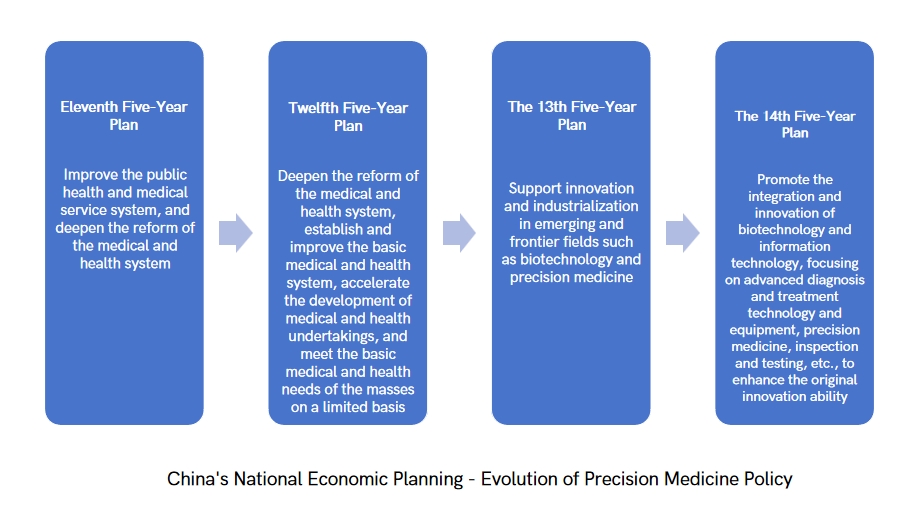The Tree of Hope - Precision Medicine
The exact time when precision medicine was first proposed is unknown, but the concept of providing personalized medicine for each individual has accompanied almost the entire history of medicine. More than 2,500 years ago, the famous physician Hippocrates spoke of the individuality of illness and the need to give different medicines to different patients.

Despite the vision, the reality remains that most treatments are designed for the "average patient" and are tailored more to the disease than to the individual patient, so they may only work for some patients. In order for breakthroughs , there were explorations on tailored treatment upon patient’s specific characteristics and disease’s specific manifestations, from traditional Chinese medicine, Islamic medicine to European humoral theory.
If "personalized medicine" is the tree of hope, many far-reaching technologies have been born on the long road to the tree. In the first decade or so of the 21st century, with the quantitative change to qualitative change in the development of science and technology, the concept of "precision medicine" has emerged, trying to redefine and integrate all the concepts and methods related to it, which is commonly defined as the methods of tailoring the prevention and treatment of the disease, by innovatively combining individual factors such as the patient's genes, environments and lifestyles, etc.
The establishment of the concept of precision medicine is based on several great changes brought about by the accumulation of human science and technology: genetic medicine that has advanced by leaps and bounds since the Human Genome Project, the era of big data opened by super computing power, the extensive and in-depth combination of artificial intelligence and medicine, and the breakthrough and mutual integration of material technology and manufacturing technology. These drastic changes affect all aspects of medical behavior, and the prevention, diagnosis, treatment and rehabilitation of diseases are all increasingly "personalized" under the concept of precision medicine.

The establishment of the concept of precision medicine is based on several great changes brought about by the accumulation of human science and technology: genetic medicine that has advanced by leaps and bounds since the Human Genome Project, the era of big data opened by super computing power, the extensive and in-depth combination of artificial intelligence and medicine, and the breakthrough and mutual integration of material technology and manufacturing technology. These drastic changes affect all aspects of medical behavior, and the prevention, diagnosis, treatment and rehabilitation of diseases are all increasingly "personalized" under the concept of precision medicine.
The considerable progress in science and technology has made many concepts of precision medicine truly realizable, with huge potential bursts out, which has led governments and various organizations to continuously weigh in. On January 30, 2015, then-US President Barack Obama announced a new plan in his State of the Union address, the Precision Medicine Initiative, calling on the States to increase funding for medical research and develop individual medical plans for patients with cancer and other diseases based on individual genetic information, and the National Institutes of Health (NIH) and other institutions followed suit. Since then, many governments have taken similar measures, aiming at huge social and economic benefits.

The overall development time of precision medicine in China is comparable to that of the world, with positive progress. In March 2015, the Ministry of Science and Technology held the first National Precision Medicine Strategy Expert Meeting and established a 19-member expert committee to put forward China's precision medicine plan. Since then, the Central Committee of the Communist Party of China, the State Council, the National Health Commission, the Ministry of Science and Technology and other departments have successively issued policies to support and standardize the development of the precision medicine industry, covering the direction of the precision medicine industry, technological innovation, and related drug and equipment research and development specifications. During the "14th Five-Year Plan" period, the National Development and Reform Commission issued the "14th Five-Year Plan for the Development of the Bioeconomy", which proposed to focus on advanced diagnosis and treatment technology and equipment, precision medicine, inspection and testing, etc., to improve the original innovation ability.

Surgery as a branch of medicine, has special significance in the history of precision medicine in China. In 2006, the concept of precision surgery was first proposed in China and has been recognized by the domestic and international medical community. With the development of a more complete concept of precision medicine, China's surgical field has practiced new concepts in gene sequencing to find therapeutic targets, big data biotechnology analysis and classification, precision surgery and drug treatment intervention, and precision rehabilitation efficacy tracking and adjustment, and finally promoting precision medicine to carry out innovative diagnosis and treatment of diseases, so as to improve the efficiency of diagnosis and treatment, reduce patient pain, reduce economic consumption, and optimize resource allocation.
Countless "small" but practical innovations have taken place on every branch, and even every tip of the tree of precision medicine. Taking orthopedic surgery as an example, intelligent algorithms, machine learning and multimodality images of patients are combined to participate in the planning of surgical plans. The three-dimensional finite element modeling technology is applied to the intraoperative imaging to achieve the same-dimensional registration of preoperative planning and intraoperative imaging. Highly integrated 3D intraoperative imaging equipment to improve the accessibility of precision medicine; Artificial intelligence technology related to image processing to improve image quality and surgical efficiency; The robotic intraoperative navigation system to provide accurate path planning and program execution for surgery. The robot's intraoperative navigation system deeply integrated with multimodality imaging to realize the personalization of path planning and program execution. Combination of three-dimensional printing technology, light-curing molding technology and fused deposition manufacturing technology to realize the precise customization of internal fixations. The list goes on and on.
The name of the concept may change with the development of the times, but the vision will not change, which is using the latest human technology to reshape medical behaviors, truly tailor disease prevention, diagnosis, treatment and rehabilitation for each individual, and maximize the benefits of medical outcomes. Inspired by this, thousands of years back, and in the foreseeable future, countless scientific researchers, doctors, influential social figures or institutions, medical product research and development personnel, and industrial personnel promoting new technologies, have devoted their efforts to making the tree of hope flourish until the fruit is available to all.

 English
English 
